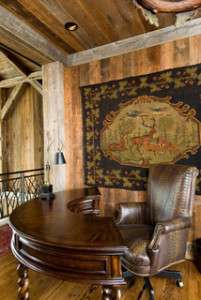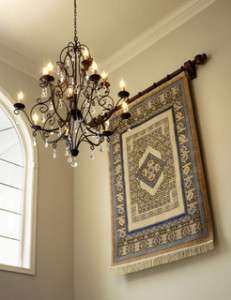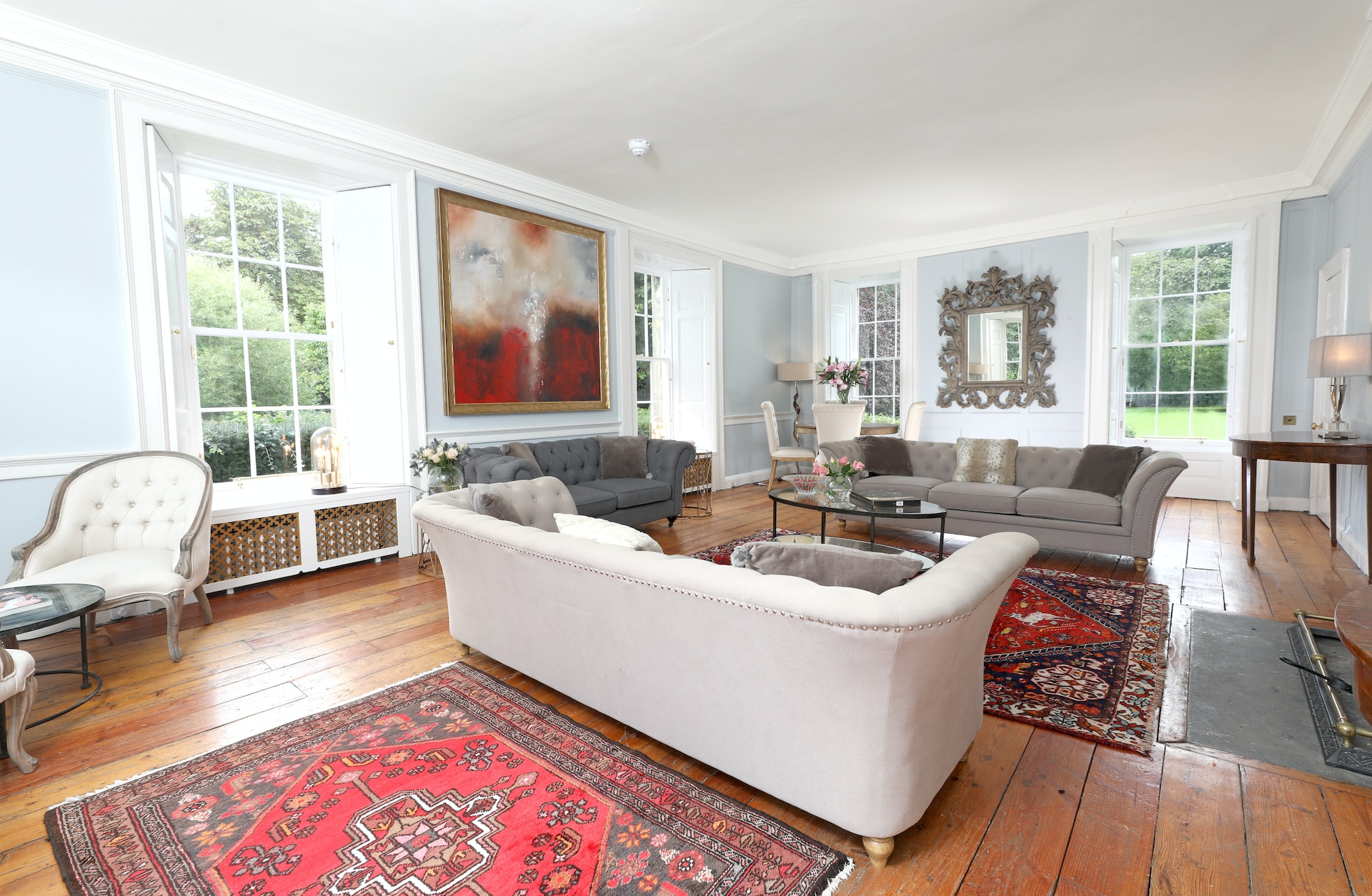Antique rugs are treasures to cherish. Therefore, you may not want to place them underfoot, yet you want them where you can appreciate their beauty.
The main considerations before hanging a rug include:
- Weight – Heavier rugs will require great care in choosing the method and location.
- Material – Wool, wool and silk or flatweave rugs need protection from damage to the yarns and strands.
- Size – Rugs that are 9×12 and 8×10 require special hardware, while 4×6 and smaller are more versatile in location and method.
- Age – The type of hardware, backing, color protection and hanging material choices increase with age.
Rug Hanging Methods
Hooks and rods

It may seem logical to tack or pin a cloth rug to a wall, so it becomes a permanent fixture. Not true! Completely avoid pushpins and thumbtacks when working with any type of cloth! The stress of pins on fabric that is hanging will ultimately destroy the shape, wear on the threads and weaken the backing on any rug.
Rods are popular for displaying a rug properly on a wall for large sizes. The hooks mounted into the wall should hold the rod while the rug is slipped over the rod by using a casing, just as you would hang a heavy drape. Finials are optional. Most designers recommend making the rod flush with the each end of the rug.
Casing

The most commonly used casing material is heavy cotton twill or linen that is hand-sewn along the back of the edge to be mounted, using canvas or heavy buttonhole thread. The necessity for a hand-sewn casing is to protect the rug’s yarn fabric. Even though the rug edge may not be straight, the casing should be sewn on straight to avoid sagging when the rug is hung. Care should be taken to paint the wood or metal that slips through the casing to protect the yarn from acids or rust.
Velcro

Thanks to the invention of Velcro, a rug can be pressed onto a board that is mounted on the wall in the studs. The soft side of a Velcro strip is hand-stitched to the back of the edge to be hung. Do not use self-adhesive backed Velcro! The strip that is glued to the mounted wood, rough side out will hold the rug as it is pressed onto the mounting. Smaller, lighter rugs are perfect for this application. However, Larger, heavier rugs will work with wider or multiple strips of Velcro on the rug backing and the wood mount. Again, it is critical to assure the strips are sewn on in a straight line to avoid drooping when the rug is pressed into place.
Mounted Frame
Think of a large museum piece and then consider using a frame with stretched canvas. The rug mount preparation is more complicated, yet more secure and sturdy than the other methods above. Flatweave and hand-woven rugs fit this method well because they tend to be lighter weight and easier to work with. The rug is hand-sewn onto the stretched canvas along the edges. Since the stitches go all the way through the rug and canvas, great care must be taken to use a neutral, clear or matching thread. Another convenience of using a frame is the ability to hang the frame on any surface with hook and wire, just like you would a picture. You can also rotate your frames to different locations.
Mounting Words of Caution

The age and fragility of an antique rug make its exposure to the elements a huge consideration. Sunlight and fluorescent lighting can destroy the colors of aging thread. Humidity is a killer because it can attract mildew to the older rug. Glass and Plexiglas should not touch the rug either, because of acid or mildew build-up that can harm the fabric.
The experts at Alyshaan rugs in Scottsdale, Arizona, will be pleased to advise you on the best methods for your beautiful antique rug’s display. Also visit www.houzz.com/alyshaan to get design ideas and referrals to rug framing experts.



